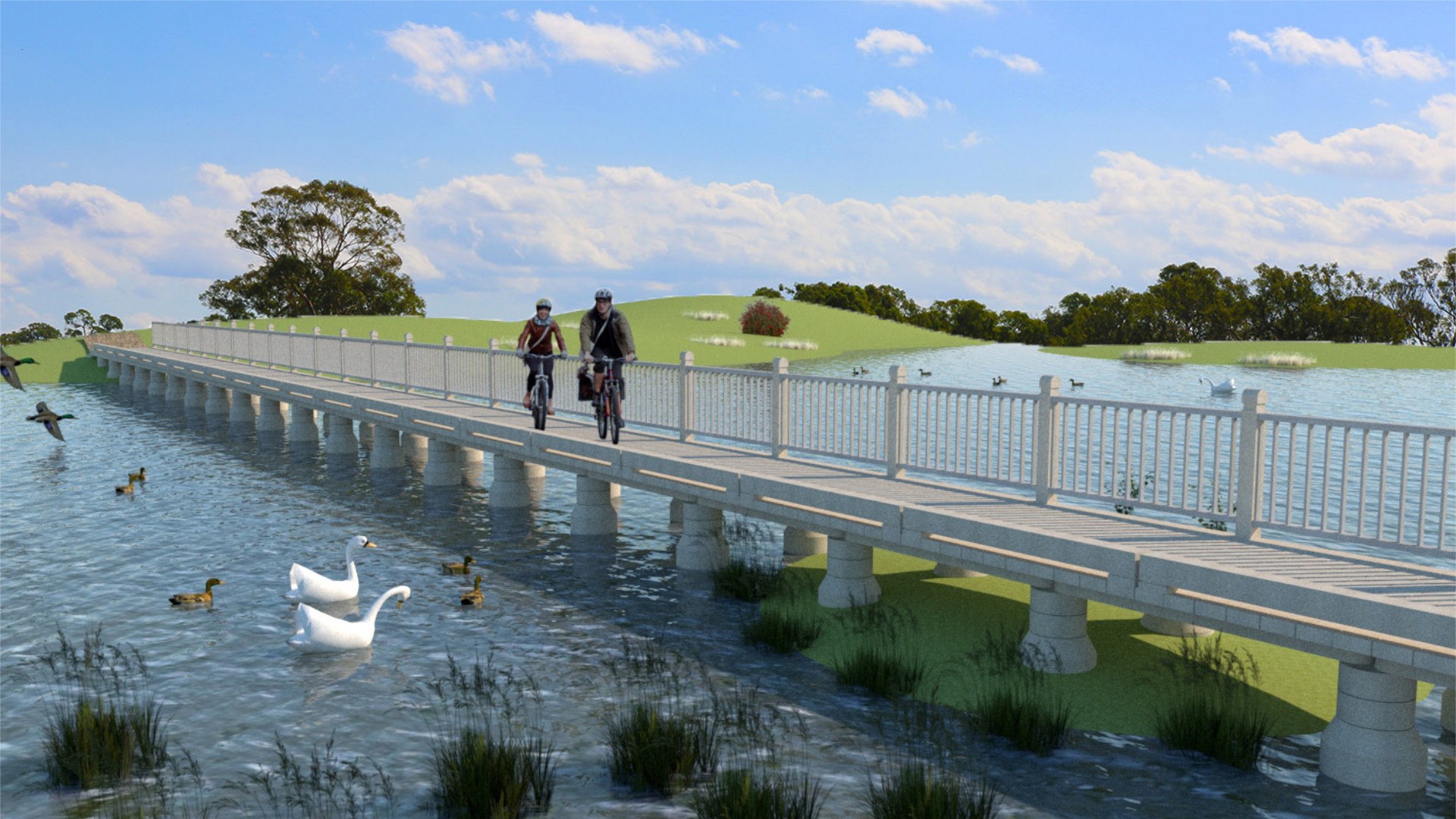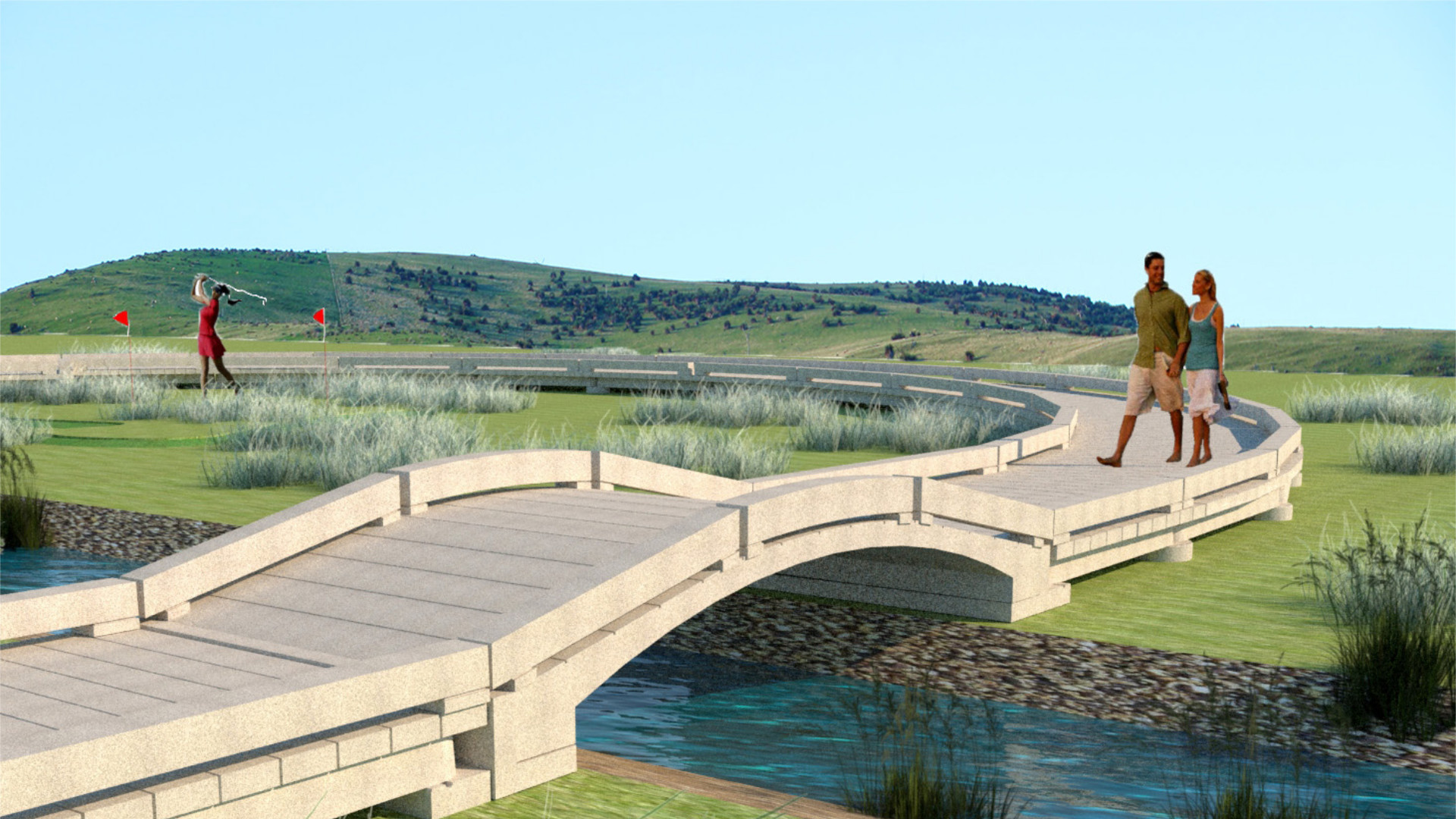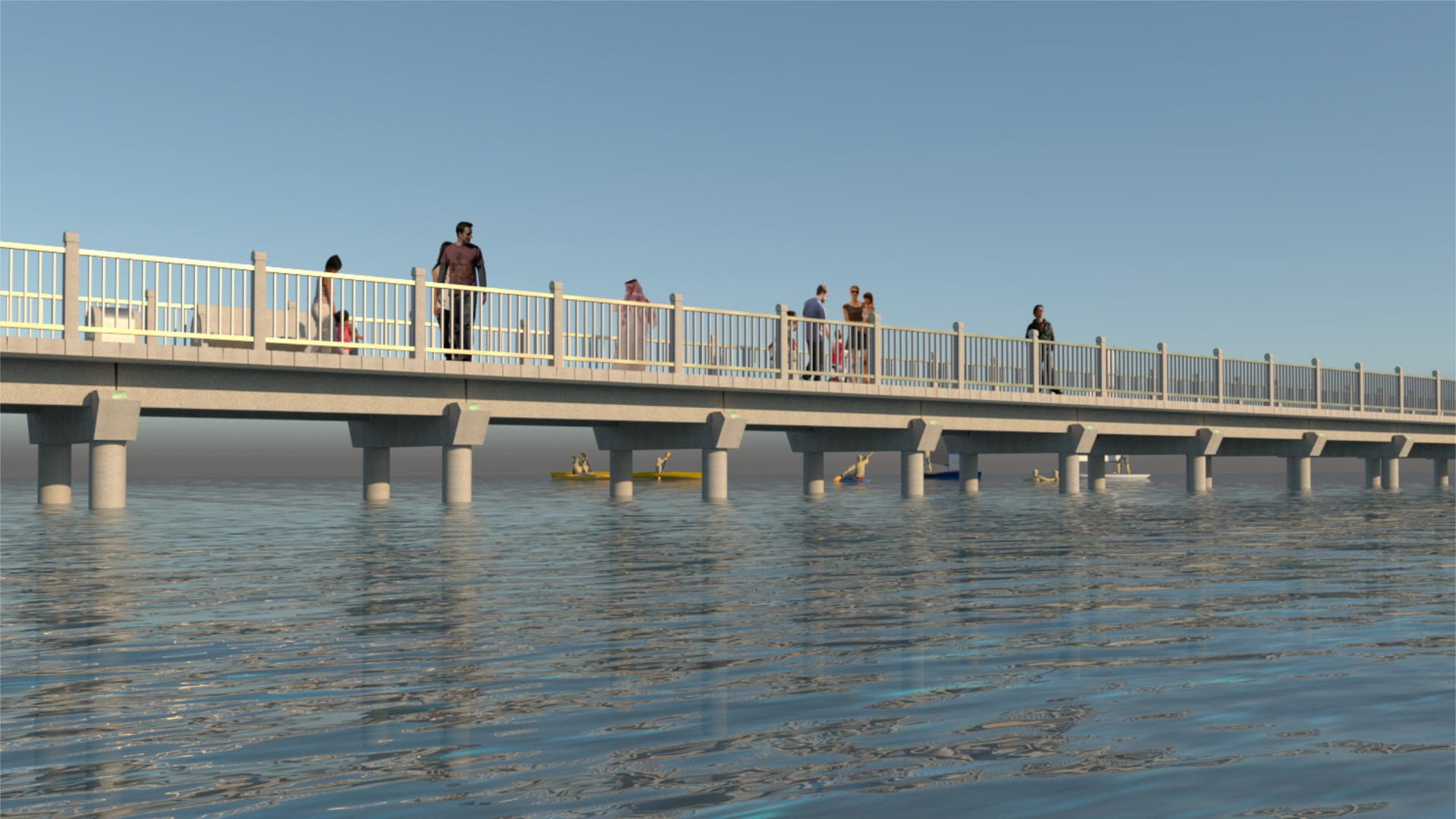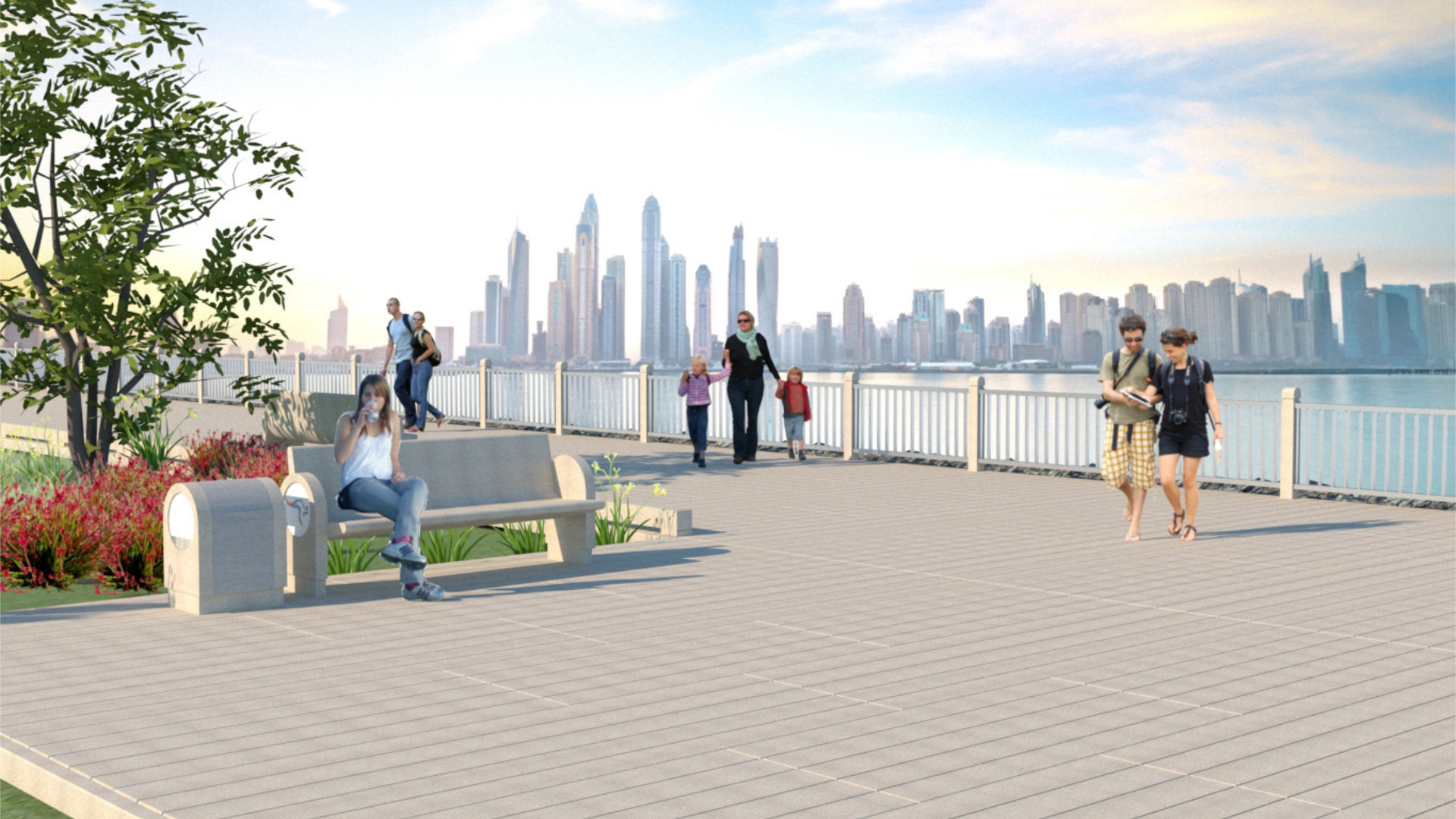Design Freedom
The modular precast concrete KangaTrak System provides the Landscape Architect the capacity to design creatively, and maintain a strong environmental focus by using the modular "Lego-like" components (piers, beams, treads and abutments) that allow for:
- horizontal and vertical curvilinear alignments
- on-ground and elevated decking with level changes using precast ramps or stairs
- enclaves for viewing or sitting, or open decks
- small pedestrian crossings or vehicle bridges
- on-ground pathways or wider promenades, or cantilevered decks over seawall edges
- that provide access to visitors with a disability (ramps, safety kerbs)
- in-deck planters using precast abutments
- integrated site furniture (precast bins, seats,bollards,sculptures)
- integrated precast fencing types or precast kerbs
KangaTrak also allows the designer the freedom to use a range of quality architectural finishes with different smooth or textured finishes (plain off-form, honed/polished, shot blast, various exposed aggregates, brushed, riven, various "timber look" finishes and creative terrazzo) or with shot blast aggregate finishes, and all with a variety of colours.
Special Options for Conservation
Other special design options include the ability to traverse environmentally sensitive landscapes without the intrusion of footings into the ground that would damage tree roots (suitable for heritage tree conservation) or that would impact sensitive groundcover plants or grasses.
"Fit for Purpose" Infrastructure
The Landscape Architect seeks to use site infrastructure that is "Fit for Purpose": that is durable and safe for the end users and is risk free for the visitor; that provides equitable access and does not have high maintenance costs; that is visually integrated into the broader existing site character or best suits their design themes. KangaTrak provides infrastructure that enhances the visitors experience and that ensures environmentally positive outcomes. That is clearly "environmentally sustainable".
Environmental Sustainability
Landscape Architects are the "vanguard design profession" with the opportunity to provide clients a truly sustainable design outcome, they determine or substantially influence the decisions from the initial design concepts, through their materials selection and their initial architectural design of a facility. This concept stage determines the functional performance of the facility and if it is truly "fit-for-purpose" and if it will retains its long term asset value, right through to its recyclability I.e. a "cradle to grave" design value for the facility or for the individual precast components.
Research has confirmed that precast concrete products have up to five (5) times less a carbon footprint as compared with hardwood timber products. (see www.artc.com.au/uploads/news-220307.pdf)
By selecting the KangaTrak systems to design with the Landscape Architects know that there will be no onsite debris/waste from construction works, no use of chemical preservatives (creosote, arsenic or metals from CCA preservative) and no other toxins from plastic Wpc products (petroleum based) that pollute the site and no ongoing pollution from plastic degradation into microplastics, and no potential for loss of infrastructure due to bushfires or "fire-bug" vandalism.
See also: Top 10 Reasons Why Composite Decking Is a Bad Idea for Boardwalks by Shannon Rogers 2013 (http://www.mcilvain.com/10-reasons-composite-decking-boardwalk-is-bad) and note in this website KangaTrak for Engineers for further links regarding the safety and durability performance of fibre reinforced plastic decking i.e. FRP products in the external environment.
Environmental Performance Specifications for the Landscape Architect
The Landscape Architect can prepare performance specifications to ensure infrastructure meets a minimum level of Environmental and Sustainability Performance for Infrastructure/Built Structures. see Sustainability and Environmental Performance Criteria for Built Structures by Landscape Architect/Environmental Planner, Franek Savarton, 2008.



